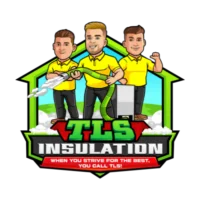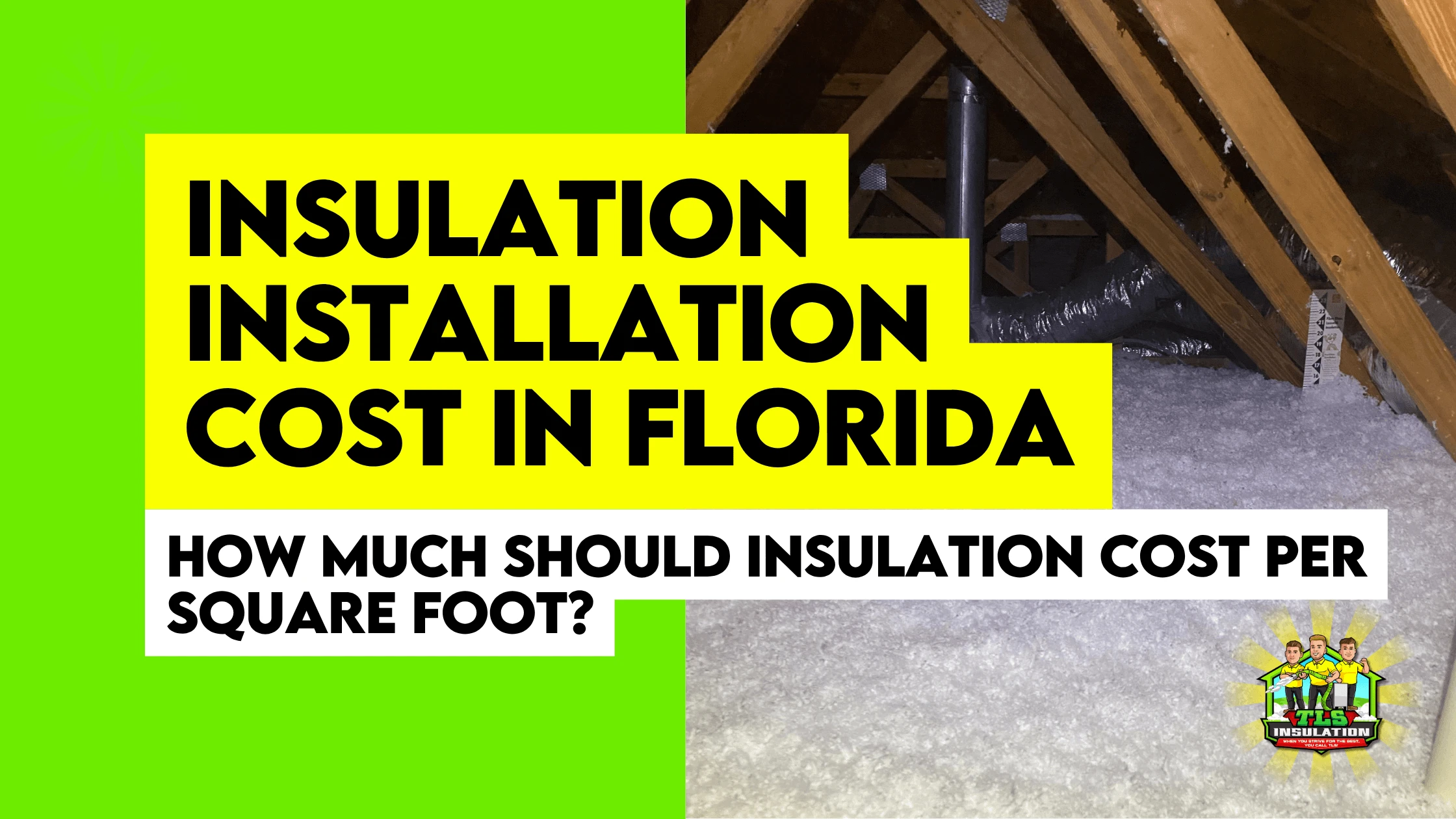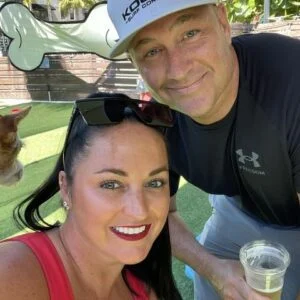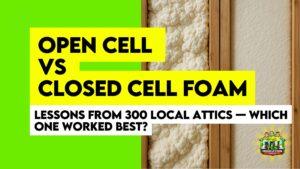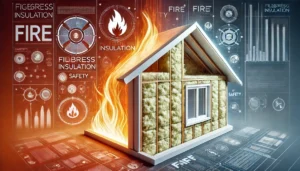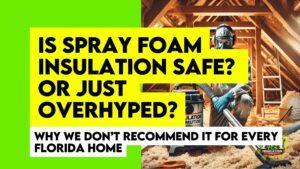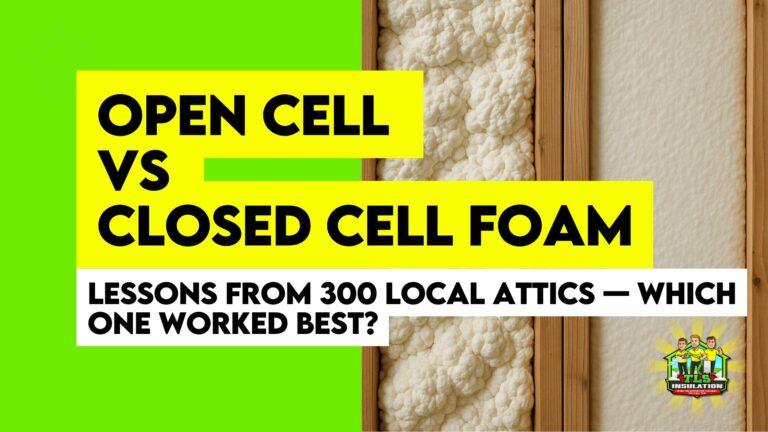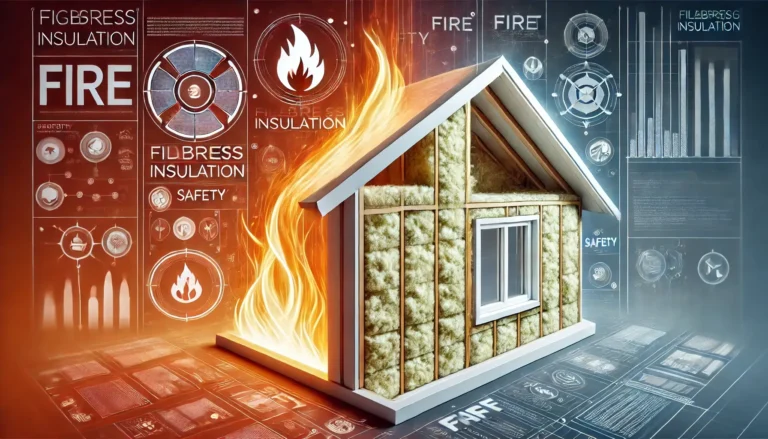In our experience working across Florida, we’ve seen how insulation installation costs can vary widely depending on location. Take Tampa, for example, its hot and humid subtropical climate requires us to often recommend fiberglass insulation as the most practical option to combat high moisture levels, which can keep the cost of insulation per square foot under budget.
Additionally, labor costs in Tampa fluctuate based on demand for professional insulation installation services and local building codes designed to maximize energy efficiency in such a warm climate.
On the other hand, Key West, with its more moderate climate and stricter hurricane-resistant building codes, can see even higher labor costs due to its remote location and the specialized rigid foam insulation required for coastal properties to prevent water damage.
These regional differences can leave homeowners confused, unsure whether they’re getting a fair price. TLS Energy Savers eliminate this uncertainty with our transparent pricing model; no hidden fees, no surprises! Just clear, honest estimates tailored to your home’s specific needs, R-value requirements, and local energy efficiency standards.
How Much Does Insulation Cost: See What Factors Affect Insulation Pricing
| Factor | Description | Impact on Cost | Practical Info |
| Material Type | Materials like spray foam cost more upfront but offer superior air sealing and energy efficiency. Fiberglass is more affordable but less efficient. | High | If on a budget, consider fiberglass batt insulation for attic insulation. Spray foam may be worth the investment for long-term savings. |
| Size of the Area | Larger areas like attics or whole-home insulation require more labor and materials, which increases the overall cost, especially in complex areas. | Medium | For smaller homes, attic insulation may be the least expensive; larger homes or homes with hard-to-reach spaces like crawl spaces will incur higher costs. |
| Labor Costs | Labor rates vary across regions. In areas like Key West, labor is pricier due to the demand for specialized hurricane-resistant insulation. | High | In remote areas like Key West, you may face added transportation and labor charges. Tampa typically offers more competitive rates due to a larger workforce. |
| Home Location and Climate | In Tampa, the humid climate increases the need for moisture-resistant insulation, which can raise costs, while areas like Key West require special codes for hurricane resistance. | High | In Tampa, you’ll want moisture-resistant materials due to high humidity. Key West requires hurricane-resistant insulation to meet local building codes. |
| R-Value and Insulation Thickness | Higher R-values and thicker insulation improve energy efficiency but increase upfront costs. Homes in Miami-Dade often require higher R-values, influencing pricing. | Medium | If you’re looking for long-term energy savings, it’s worth considering higher R-values for optimal insulation. Homes in hotter climates like Miami-Dade need higher R-values. |
Material Type
In our experience, the material type you choose greatly influences the insulation price. Here in South Florida, we recommend fiberglass blown-in insulation as a solid, cost-effective choice for attic insulation or wall insulation in many homes. While spray foam insulation offers superior moisture resistance and energy efficiency, it’s priced higher due to its air sealing and R-value capabilities.
Choosing the right material depends on your home’s needs, climate, and budget. Fiberglass remains our go-to option for most homes in Tampa due to its balance of performance and affordability.
- Fiberglass insulation is perfect for affordable insulation in South Florida homes.
- Spray foam offers superior energy savings, especially in humid areas.
- Cellulose is a great eco-friendly choice for energy efficiency.
Size of the Area
We’ve found that the size of the area to be insulated plays a huge role in insulation installation cost. Larger homes, especially in Tampa and Boca Raton, with expansive attics or crawl spaces, can see higher costs per square foot for insulation.
Homes with larger areas tend to have lower per-foot costs for larger projects, but the total insulation price will naturally increase. Whether you’re insulating your attic or entire home, the size will scale costs, and the complexity of the space, like hard-to-reach areas, can add to the cost.
- Larger homes or attics require more insulation material and labor.
- Crawl spaces can be difficult, increasing both material and labor costs.
- Smaller projects like attic insulation tend to be more cost-effective.
Labor Cost To Install Insulation:
Labor costs are another significant factor when calculating insulation costs. In South Florida, labor pricing can vary depending on the region and the complexity of the job. For instance, Tampa offers competitive rates for insulation installation due to a large pool of skilled professionals.
In contrast, areas like Key West might have higher labor costs due to the remote location and specialized hurricane-resistant insulation required by local building codes. Our team works hard to keep labor costs reasonable while ensuring the job is done right.
- Tampa offers competitive rates for standard insulation installations.
- Labor costs increase in remote areas like Key West due to specialized installations.
- Specialized skills needed for hurricane-resistant insulation increase prices.
Home Location and Climate
In South Florida, climate plays a big role in determining insulation needs. In Tampa, with its high humidity and subtropical climate, we often recommend moisture-resistant materials like spray foam for optimal performance.
In areas like Key West, where hurricane-resistant insulation is crucial, the cost tends to go up due to the specific materials and labor required. The need for energy-efficient insulation varies based on the local weather conditions, and we tailor our recommendations to your home’s specific needs to maximize energy savings.
- Tampa’s humidity makes spray foam a preferred solution for homes.
- Key West’s hurricane codes require rigid foam or spray foam.
- Local energy codes can also influence material pricing and selection.
R-Value and Insulation Thickness
R-value and insulation thickness are important, but the impact on cost for insulation is usually moderate compared to factors like material and labor. Here in Florida, ensuring that insulation meets the energy efficiency standards required by local building codes is crucial. Thicker insulation and higher R-values are essential in warmer climates to reduce the strain on air conditioning.
For example, homes in Miami-Dade County require higher R-values for attic insulation to comply with energy efficiency requirements, which naturally increases the overall insulation installation cost.
- Higher R-values increase the upfront cost but provide better energy efficiency.
- Thicker insulation provides long-term savings on cooling costs.
- Miami-Dade homes need higher R-values to meet local codes.
Types of Insulation and Their Per Square Foot Cost
Understanding the cost for insulation is crucial when planning your project. The cost of insulation per square foot will vary based on the material used, installation methods, and your location.
| Insulation Type | Cost per Square Foot | Ideal Use | Description |
| Fiberglass Insulation | $0.50 to $2 | Attics, Walls, Floors | One of the most cost-effective insulation materials. It provides good thermal resistance and is commonly used in attics and walls. |
| Spray Foam Insulation | $3 to $5.50+ | Attics, Crawl Spaces, Walls | Superior moisture resistance, air sealing, and energy efficiency make it ideal for humid climates. Prices vary for open-cell and closed-cell foam. |
| Cellulose Insulation | $1 to $2 | Attics, Walls (Eco-Friendly) | An eco-friendly option made from recycled paper, offering good thermal resistance and filling gaps in attics and walls. |
| Foam Board Insulation | $0.80 to $2 | Foundations, Basements, Exteriors | Rigid foam panels provide excellent thermal resistance and moisture protection, ideal for foundations in coastal Florida. |
Fiberglass Insulation:
$0.50 to $2 per square foot. Fiberglass is our go-to for homeowners looking top-notch practicality considering affordability and reliability, especially in attics or walls. It provides good thermal resistance and is a popular choice for budget-conscious homeowners in Tampa, North Port, and Sarasota.
It’s also incredibly easy to install and often used for homes where standard insulation works best. For homes in Florida, it balances cost and performance well. If you’re looking to reduce your cooling costs without breaking the bank, this is a solid choice.
Spray Foam Insulation:
Spray foam Prices range from $3 to $5.50+ per square foot, depending on whether you choose open-cell or closed-cell foam. Spray foam has the edge in areas with high humidity, like Tampa and West Palm Beach, where moisture resistance and air sealing are crucial.
Closed-cell spray foam offers the highest R-value, making it the best option for attics, crawl spaces, or areas prone to moisture, but it can be a bit pricier. Over time, it helps lower cooling bills significantly, especially in Florida’s humid climate. The higher price for closed-cell foam may seem like a big investment, but the savings on energy costs make it worthwhile in the long run.
Cellulose Insulation:
$1 to $2 per square foot. This eco-friendly option made from recycled paper works great for attics or walls. It’s a perfect choice for those in Venice and Naples looking to stay green while still achieving good thermal resistance.
Cellulose offers decent insulation performance and is installed using the blown-in method, filling gaps and irregular spaces. It’s not as durable as spray foam, but it provides an affordable, environmentally friendly option for those looking to reduce their carbon footprint while improving energy efficiency.
Foam Board Insulation:
$0.80 to $2 per square foot. Rigid foam panels are widely used for foundations, basement walls, and exteriors, especially in coastal cities like Key West and Fort Lauderdale. Florida’s humid environment requires insulation that can withstand moisture, and foam board delivers.
It’s ideal for insulating areas that face high moisture levels, such as foundation walls or exterior walls. This material’s durability makes it a great choice for coastal Florida homes, where moisture resistance is critical.
Hidden Costs in Insulation You Should Know
When budgeting for your insulation project, there are some hidden costs that can sneak up on you. These can add up quickly, so here’s what to keep in mind when planning your insulation installation cost:
Permits and Code Compliance
In South Florida, especially in cities like Miami-Dade or Tampa, certain insulation types require permits to meet local building codes. The costs of these can range from $100 to $500. When we work on homes in Key West or Fort Lauderdale, permits are often necessary to meet hurricane-resistant standards.
- Permits are required for hurricane-resistant insulation in coastal areas.
- Code compliance adds to material costs and time.
- Tampa and Miami have stricter building codes.
Removal of Old Insulation
If your home has outdated insulation, it’ll need to be removed first, which can cost $0.50 to $1 per square foot. This is especially common in older homes in Sarasota or Venice, where we often encounter fiberglass or cellulose that no longer meets modern efficiency standards.
- Old insulation removal can add significant costs.
- Sarasota homes often need fiberglass removal.
- Older homes may have outdated insulation.
Air Sealing and Additional Preparations
For maximum energy efficiency, we often find air sealing necessary, which can cost an additional $200 to $500. In places like West Palm Beach, where humidity can cause air leaks, sealing gaps around windows and doors is critical to ensure the insulation performs properly.
- Air sealing is essential for preventing energy loss.
- Seal gaps around windows to improve insulation performance.
- In humid areas like Palm Beach, sealing is a must.
Insulation Upgrades for Specific Areas
Some regions in South Florida, like Miami, require specialized insulation to meet local needs. For example, closed-cell spray foam is often required for hurricane-resistant homes. This can add an extra $1 to $2 per square foot, but it ensures the insulation meets Florida’s hurricane building codes.
- Hurricane-resistant insulation raises material costs.
- Closed-cell spray foam provides moisture resistance.
- Miami-Dade has strict codes for insulation.
Disposal Fees
Old insulation needs to be disposed of, and that comes with an additional fee. In Tampa and North Port, disposal can cost anywhere from $100 to $300, depending on the material. If your insulation is removed from difficult-to-reach spaces, such as crawl spaces or attics, these fees can increase.
- Disposal fees depend on old insulation type.
- Crawl spaces or hard-to-reach areas increase costs.
- Disposal adds $100-$300 to your project.
Seasonal Pricing Fluctuations
Like any service in South Florida, insulation pricing can fluctuate with the seasons. During the busy summer months, when demand for cooling-related services is at its peak, both labor costs and material prices may increase. Scheduling your insulation project in the off-season, such as fall or winter, can help lower overall costs.
- Summer months increase labor and material costs.
- Off-season installations in fall or winter save money.
- Tampa sees price hikes during peak cooling season.
So Is Insulation Expensive – What’s Our Take?
Insulation can seem expensive at first glance, but we believe it’s a strategic investment in your home’s future. The cost of insulation depends on your goals whether you’re focused on long-term energy savings, enhancing comfort, or boosting home value. If your goal is to reduce cooling costs and increase efficiency, insulation is one of the best ways to do so.
Choosing the right insulation type for your home’s climate, like fiberglass for cost efficiency or spray foam for superior sealing, directly impacts both cost and performance. The return on investment (ROI) is clear: better insulation can save 20-30% on energy bills, paying for itself over time while improving your home’s comfort and energy efficiency.
Frequently Asked Questions (FAQs)
How much does insulation cost in Florida?
The cost of insulation in Florida can range from $0.50 to $5.50 per square foot, depending on the material, such as fiberglass or spray foam. Labor costs also vary by region, with Tampa and Miami having different pricing.
What’s the cost to replace insulation?
Replacing insulation can cost between $1 and $3 per square foot, depending on the type of insulation and the complexity of the job. Labor costs may add to the overall new insulation cost.
What’s the new insulation cost?
The new insulation cost varies by material and home size. For instance, fiberglass insulation generally costs $0.50 to $2 per square foot, while spray foam insulation can go up to $5.50 per square foot.
How expensive is insulation?
Insulation can be expensive, especially for high-performance options like spray foam. However, the cost of insulation per square foot is an investment that leads to long-term energy savings and increased home comfort.
What is the labor cost to install insulation?
The labor cost to install insulation typically ranges from $0.50 to $2 per square foot, depending on the material, complexity, and location. Labor costs in cities like Miami and Tampa can vary.
What’s the cost of insulation per square foot?
The cost of insulation per square foot depends on the material and installation method. Fiberglass typically ranges from $0.50 to $2, while spray foam can be as high as $5.50 per square foot.

